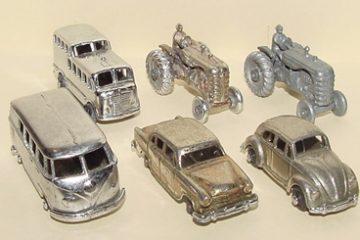The automotive industry has always been driven by performance, precision, and innovation. As vehicle components grow more complex and lightweight, manufacturers are increasingly turning to smarter production materials. One process that continues to gain popularity is zinc alloy die casting. Known for its durability, detail, and efficiency, this method serves a crucial role in automotive part production.
Unlike other casting materials, zinc alloy offers a combination of formability, strength, and cost-effectiveness. These advantages make it an ideal solution for automotive applications ranging from structural supports to interior components. As demands for fuel efficiency and design complexity rise, manufacturers have begun to rely more heavily on zinc die casting than ever before.
Exceptional Dimensional Accuracy and Complex Shapes
One reason automotive manufacturers prefer zinc alloy die casting is the process’s ability to achieve complex geometries. Components like brackets, housings, and gears often require intricate detail that other materials struggle to replicate. Zinc alloys can be cast into precise shapes without needing secondary machining.
Because high-pressure die casting allows tight tolerances, parts come out uniform and ready to assemble. For example, gear casings and dashboard parts are produced with detailed surface features. As a result, engineers can maintain design integrity without sacrificing function or increasing costs.

Superior Mechanical Properties for Automotive Demands
Automotive parts endure extreme stress and environmental challenges. Zinc alloy die casting provide high tensile strength, impact resistance, and fatigue performance—traits essential for moving or structural parts. In many cases, these alloys outperform plastic or aluminum under similar loads.
Additionally, zinc alloy’s ability to resist corrosion and wear extends the life of critical components. Even under exposure to moisture, oils, and varying temperatures, these parts remain reliable. Due to these strengths, zinc alloys are now being used in both under-the-hood and exterior assemblies.
Cost Efficiency Without Compromising Quality
Manufacturers constantly seek to reduce production costs without affecting performance. Zinc alloy die casting helps meet that goal by streamlining processes and reducing material waste. The alloys melt at lower temperatures, which reduces energy consumption during casting.
Furthermore, die-cast zinc parts require minimal machining and finishing. That reduces labor costs and production time. Although other materials might appear cheaper, their processing and maintenance costs can be significantly higher. Zinc’s high casting fluidity also leads to fewer defects, which minimizes scrap and rework rates.
Design Versatility with Consistent Repeatability
In the fast-paced world of automotive manufacturing, product uniformity is essential. Zinc alloy die casting offers repeatable performance across mass production runs. Once a die is created, thousands of parts can be cast with consistent dimensions and tolerances.
Moreover, design flexibility enables engineers to integrate multiple components into a single part. This reduces assembly steps and increases overall part strength. Hinges, handles, and even electronics housings benefit from this approach. Custom finishes like plating or painting are also easily applied to zinc surfaces, enhancing both appearance and protection.
Eco-Friendly Material and Energy-Saving Process
Sustainability remains a key concern across the automotive industry. Zinc alloy die casting supports greener manufacturing by using fully recyclable materials. Scrap zinc from casting is collected, remelted, and reused without compromising quality.
In addition, the die casting process uses lower temperatures than aluminum or magnesium. This energy-saving quality reduces carbon emissions and operating costs. Because of its long lifespan and reusability, zinc aligns well with modern environmental standards. Responsible sourcing of raw materials has also contributed to zinc’s popularity among eco-conscious brands.
Compatibility with Modern Automotive Technologies
As vehicles become smarter, smaller, and more integrated, zinc alloy die casting proves adaptable. Electronic control units, sensor housings, and charging ports all benefit from zinc’s shielding and conductivity properties. Components can be designed with embedded features that meet both mechanical and electrical needs.
Autonomous vehicle systems, electric cars, and advanced driver-assistance technologies rely on compact, precise enclosures. Zinc alloy die casting enables the miniaturization of such parts without sacrificing performance. This makes it an ideal material for today’s evolving automotive platforms.
Final Thoughts
In today’s competitive automotive landscape, manufacturers demand materials that can deliver strength, precision, and efficiency. Zinc alloy die casting meets those demands through its exceptional mechanical properties, repeatable performance, and cost-effectiveness.
From transmission components to dashboard parts, zinc proves to be a reliable and adaptable solution. Manufacturers benefit not only from lower production costs but also from improved product performance and sustainability. Additionally, the ability to create complex shapes with fine detail reduces assembly steps and supports modern design trends.
It is no surprise that automotive manufacturers prefer zinc alloy die casting over more traditional methods. As vehicles become more sophisticated, so must the components that power them. Zinc alloys offer a future-ready approach to automotive design, meeting the high expectations of engineers and consumers alike.